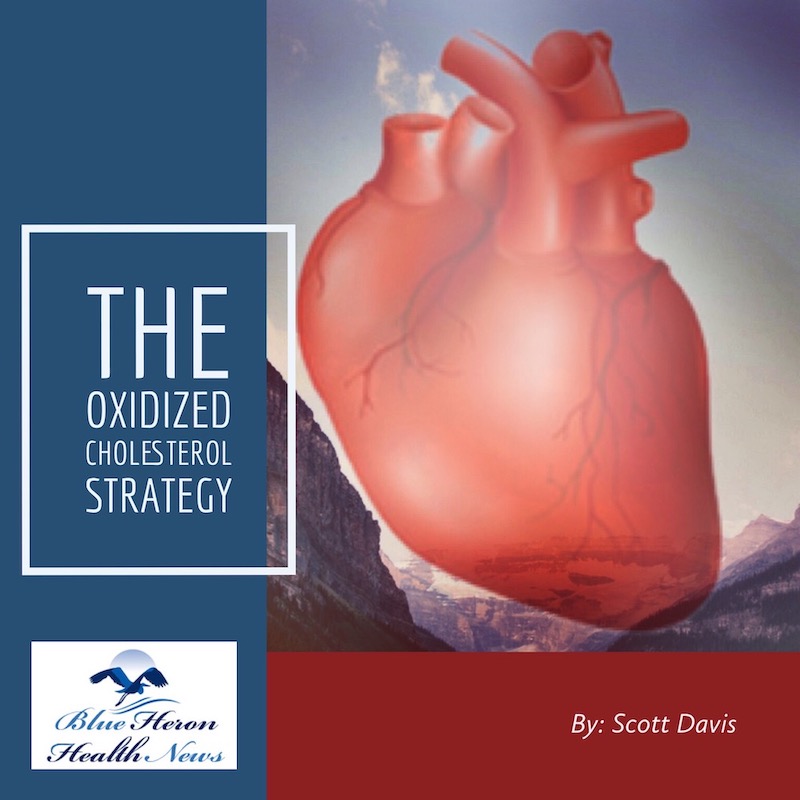
The Oxidized Cholesterol Strategy™ By Scott Davis The Oxidized Cholesterol Strategy is a well-researched program that reveals little known secret on how to tackle cholesterol plaque. This program will tell you step by step instructions on what you need to completely clean plaque buildup in your arteries so as to drop your cholesterol to healthy level.
What is the impact of oxidized cholesterol on gene expression?
Oxidized cholesterol (oxLDL) can significantly impact gene expression, particularly genes involved in inflammation, lipid metabolism, vascular health, and immune response. When cholesterol is oxidized, it becomes more reactive and can interact with cellular components, leading to a cascade of biological responses that influence the transcription of various genes. Here’s how oxidized cholesterol can affect gene expression:
1. Activation of Inflammatory Pathways
- Oxidized cholesterol triggers inflammatory signaling pathways, which are primarily mediated by the activation of nuclear factor kappa B (NF-κB), a key transcription factor involved in the inflammatory response. NF-κB regulates the expression of genes related to inflammation, such as cytokines, chemokines, and adhesion molecules.
- Increased expression of pro-inflammatory cytokines like TNF-α (tumor necrosis factor-alpha), IL-6 (interleukin-6), and IL-1β leads to systemic inflammation, which can damage blood vessels and promote the development of atherosclerosis. This inflammatory response is often seen in conditions where oxidized cholesterol accumulates, contributing to cardiovascular diseases.
2. Induction of Endothelial Dysfunction
- Oxidized LDL affects endothelial cells, which line the blood vessels. It alters the expression of genes that regulate endothelial cell function, such as those involved in vasodilation, vascular tone, and platelet aggregation.
- One key effect is the activation of the vascular cell adhesion molecule-1 (VCAM-1) and intercellular adhesion molecule-1 (ICAM-1), which promote the adhesion of immune cells (like macrophages) to the endothelium. This process is a critical step in the development of atherosclerosis, where macrophages engulf oxidized cholesterol and form foam cells, contributing to plaque buildup in the arteries.
3. Changes in Lipid Metabolism Genes
- Oxidized cholesterol can alter the expression of genes involved in lipid metabolism, including those regulating cholesterol uptake, synthesis, and excretion. For example, scavenger receptors such as SR-A1 (scavenger receptor A type I) and CD36 are upregulated in response to oxidized LDL. These receptors facilitate the uptake of oxidized cholesterol into cells, especially macrophages, contributing to foam cell formation and plaque development.
- ABCA1 (ATP-binding cassette transporter A1), a key gene involved in the reverse cholesterol transport process, can also be downregulated by oxidized cholesterol. This reduces the ability of cells to export excess cholesterol, exacerbating cholesterol accumulation in arterial walls and contributing to the development of cardiovascular diseases.
4. Activation of the NLRP3 Inflammasome
- Oxidized LDL can activate the NLRP3 inflammasome, a protein complex that plays a crucial role in innate immune response and inflammation. The activation of NLRP3 leads to the cleavage and activation of caspase-1, which in turn activates pro-inflammatory cytokines such as IL-1β and IL-18. This contributes to chronic inflammation and promotes atherogenesis (plaque formation in the arteries).
- The NLRP3 inflammasome is particularly important in the inflammatory response to oxidized cholesterol and is a key mediator in the pathogenesis of cardiovascular diseases.
5. Regulation of Apoptosis and Cell Death
- Oxidized cholesterol has been shown to modulate the expression of genes involved in apoptosis (programmed cell death). For example, oxidized LDL can upregulate genes that promote cell death, such as Bax (pro-apoptotic) and p53, a tumor suppressor gene that is involved in cell cycle regulation and apoptosis.
- On the other hand, oxidized cholesterol can also influence genes that inhibit apoptosis, such as Bcl-2. This imbalance between pro- and anti-apoptotic gene expression can lead to cellular damage, especially in endothelial cells and smooth muscle cells, contributing to the development of atherosclerosis and other vascular diseases.
6. Impairment of Antioxidant Defense Mechanisms
- Oxidized cholesterol can influence the expression of genes involved in the antioxidant response, leading to reduced antioxidant defense. One key transcription factor involved in the antioxidant response is Nrf2 (nuclear factor erythroid 2-related factor 2). Nrf2 regulates the expression of genes that encode for antioxidant enzymes, such as superoxide dismutase (SOD) and glutathione peroxidase (GPx).
- In the presence of oxidized cholesterol, the ability of Nrf2 to upregulate antioxidant defenses may be compromised, leading to increased oxidative stress and further lipid oxidation. This can create a vicious cycle of oxidative damage, contributing to the progression of cardiovascular diseases.
7. Alteration of Gene Expression in Immune Cells
- Macrophages and other immune cells are key targets for oxidized cholesterol. When these cells engulf oxidized LDL, they activate a variety of signaling pathways that alter gene expression. For instance, the uptake of oxidized LDL by macrophages leads to the activation of genes involved in foam cell formation, inflammation, and lipid metabolism.
- Macrophage polarization is also influenced by oxidized cholesterol, promoting a pro-inflammatory phenotype (M1 macrophages), which enhances the release of inflammatory cytokines and promotes plaque development.
8. Influence on Gene Expression in Smooth Muscle Cells
- Oxidized cholesterol affects the behavior of vascular smooth muscle cells (VSMCs), which play a role in plaque formation. Oxidized LDL can promote the expression of genes that induce VSMC proliferation, migration, and collagen synthesis, contributing to the fibrous cap of atherosclerotic plaques.
- These changes in smooth muscle gene expression may lead to the thickening of arterial walls and increase the risk of plaque rupture, which is a major cause of heart attacks and strokes.
9. Impact on Gene Expression in the Liver
- The liver plays a central role in lipid metabolism and cholesterol homeostasis. Oxidized cholesterol can influence gene expression in the liver, affecting the synthesis of cholesterol, lipoproteins, and other key metabolic pathways. For example, oxidized cholesterol may alter the expression of HMG-CoA reductase (a key enzyme in cholesterol synthesis) and LDL receptor genes, contributing to an imbalance in lipid metabolism.
Conclusion:
Oxidized cholesterol can have a profound effect on gene expression, particularly in pathways related to inflammation, lipid metabolism, vascular health, and immune response. By triggering the activation of various transcription factors, such as NF-κB and Nrf2, oxidized cholesterol influences the expression of genes that promote inflammation, foam cell formation, vascular remodeling, and apoptosis. These changes in gene expression contribute to the development of atherosclerosis, cardiovascular diseases, and other chronic conditions associated with oxidative stress and lipid imbalance. Understanding how oxidized cholesterol impacts gene expression is essential for developing strategies to prevent and treat diseases related to cholesterol oxidation.
The Oxidized Cholesterol Strategy™ By Scott Davis The Oxidized Cholesterol Strategy is a well-researched program that reveals little known secret on how to tackle cholesterol plaque. This program will tell you step by step instructions on what you need to completely clean plaque buildup in your arteries so as to drop your cholesterol to healthy level.
